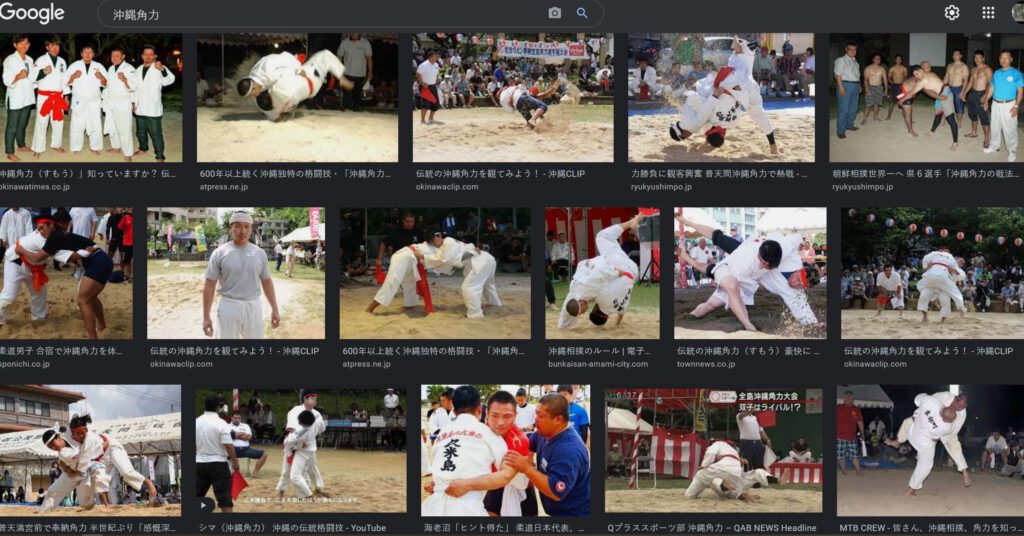During the last twenty years, Tegumi has become a term used be an incresing number of persons for all kinds of karate-related practices. For this reason, I would like to point out the origin of the term “tegumi” in the English-speaking karate world.
Nagamine Sensei’s 1986 book is written in the Japanese language. The reason for writing the book was to provide biographies of Okinawan karate and sumo masters, based on historical facts and oral traditions. Actually, as I mentioned in an earlier article, Nagamine Sensei wrote this book due to his “relationship of particular friendship with Kushi Jokei,” an Okinawan sumō champion and lifelong friend of Nagamine’s. While Kushi Jokei collected research about the origin of Okinawa sumō, he passed a way to early. Therefore, Nagamine Sensei took up the responsibility and finalized Kushi’s will, organized his records on Okinawan sumō, and publish it in this book.
Among the Okinawa sumō research of Kushi Jokei is found a note about the origin of Okinawa sumō.
“This sumō was initially a kind of pastime grappling in which kicking with the foot and striking techniques with the fist were prohibited. It was similar to the current amateur wrestling and it was continued until the opponent was defeated. This kind of competition was called ‘tegumi’ in Naha, and ‘mūtou’ in the Tomari and Shuri regions. This pastime was continued until the Taishō era, when further inventions were added. This was the original form of Okinawa sumō, which has been created as an event that follows the premise of a peaceful and enjoyable pastime, and its internal rules have been created and handed down traditionally, and remain to this day, and this may be the origin of Okinawa sumō as seen from folk history.”
Nagamine 1986: 183 (Transl. A. Quast)
There are many interesting details in this description, but for now I would like to point out only one thing: In the whole 1986 book by Nagamine Sensei, the term “tegumi” appears only once, namely in the above quote.
© 2022, Andreas Quast. All rights reserved.

